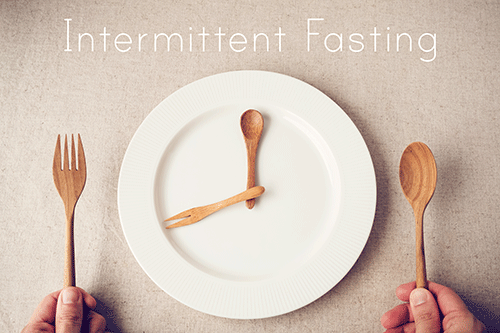It seems as though every time you turn around, there’s a new health and wellness trend. One of the most popular lifestyle adjustments that popped up in the last couple years is called intermittent fasting. There are a few different versions of it. Let’s take a look at each one.

16/8
The 16/8 method of intermittent fasting is where beginners should start. It’s a great way to dip your toe in. It requires you to fast for 16 hours of the day and only eat during your 8 hour ‘eating window’.
5:2 Diet
This is another form of IF that would be great for beginners. In the 5:2 diet, you will eat normally for 5 days of the week and then restrict your calories (500 for women and 600 for men) for two days of the week.
Eat Stop Eat
Eat Stop Eat requires a full 24 hour fast once or twice a week. For example, you could eat breakfast, and start fasting at 10am. You would then fast until the next morning and start eating at 10am. You are allowed to consume liquids such as water, coffee or any zero calorie beverages during your fasting period. However, no solid foods are allowed on those days.
Alternate Day Fasting
This method of intermittent fasting is pretty self- explanatory. It involves you alternating days you eat normally and days you fast for a complete 24 hours. If you cannot go a full 24 hours without food, you are allowed to consume a few hundred calories. This method can be a challenge and it’s something you might have to work up to. Otherwise, trying to function on an empty stomach for a full day can feel quite overwhelming.
Warrior Diet
An article written by Kris Gunnars for healthline.com explains this particular form of intermittent fasting. He states, “The Warrior Diet was popularized by fitness expert Ori Hofmekler. It involves eating small amounts of raw fruits and vegetables during the day and eating one huge meal at night. Basically, you fast all day and feast at night within a four-hour eating window. The Warrior Diet was one of the first popular diets to include a form of intermittent fasting. This diet’s food choices are quite similar to that of the paleo diet- mostly whole, unprocessed foods.”
Spontaneous Meal Skipping
Spontaneous meal skipping is also known as short fasts. It simply means that if you’re having a busy morning, or aren’t hungry, you should skip a meal. Now, this doesn’t mean that because you skipped breakfast, you can treat yourself to junk food and empty calories for the remainder of the day. It simply means that you’ll be utilizing the storage of energy your body has accumulated to fuel you until your next meal.

There are so many different opinions on how to be the healthiest version of yourself. Find the methods that works best for you and start working towards your health goals.




